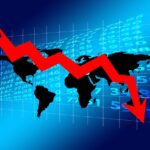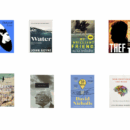My 600th column: Kenya’s true economic engine
This is my 600th column on this page, and to record the milestone let us take another look at this country of ours – through a different lens.
Recently, feeling depressed by the state of the nation – the self-centred, money grabbing politicos and their relentless noise, the unending terrorist attacks, the spiralling epidemic of violent crime – I decided to take a little tour to raise my spirits. But I did not go to look at the ever-sprouting real-estate projects, or to sit with investment bankers and private-equity specialists in exclusive clubs to discuss the flood of foreign money gushing into new malls and our effervescent stock market.
None of that stuff gives me hope, you see. That is just money men constructing stories for their own gain, and talking up asset prices. You can’t judge an economy’s true wellbeing by looking at its money markets, not when those markets are easily manipulable and so easily driven by fickle sentiment. You have to look at something deeper.
So I eschewed the high-rises and flashy heart of Nairobi, and went to visit its fringes. After a gap of many years, I went to spend time in the areas of Nairobi that I grew up in, the haunts of my childhood years: from River Road to Gikomba, from Ngara and Pangani to Eastleigh. Those are not fashionable places in boom-town Nairobi, but they are nonetheless very revealing.
What did I find? On the surface, they show the ravages of neglect: infrastructure is fraying, and governance is clearly a major challenge. These are not areas to walk through; they are so much dirtier and more dangerous than I remember. But look deeper, and you see an altogether more interesting dynamic at play.
They do not receive much official attention, these fringe areas of the city. They are difficult to govern, and politicians do their best to divide the people on ethnic lines. The property magnates and foreign investors do not visit – their money floods into Upper Hill, Lavington and Karen.
And yet, they are vibrant micro-cities in themselves. A day spent gazing at the activity that takes place would astonish you. There is hustle and bustle, trade and commerce, people buying and people selling. Wherever you look, you will see people engaged in the economy. People making food to sell; people hawking everything from airtime to cheap phones to padlocks; people in tiny shops packed to the ceilings with merchandise; visitors in hostelries and lodgings; huge bank branches teeming with customers.
This, not the electronic digits of the money men, is the heart of modern urban Kenya: people looking after themselves; people striving to improve their lot; people working all hours to put food on the table and educate their kids; people not waiting for handouts from capricious politicians.
That spirit is what in fact keeps us going, when capital inflows dry up and governments take us into fiscal dead-ends. That spirit is the reason our economy always bounces back; and why we are able to compensate for the waste and incompetence of bad leaders. Yet we do nothing to harness this energy; it grows in spite of the efforts of leaders, not because of them.
And so I came back refreshed from my little tour, heartened that we have something that will take this country far, and that I know is the envy of our neighbours. Not our skyscrapers and glitzy hotels, but our millions of little enterprises, the true engine of our economy.
If there are still people of vision in government, they would do well to take their eyes off grand delusions of mega-cities and mega-projects, and go small, very small. Fan the spirit of enterprise, by providing people with the law and order and power and sanitation that they need to look after themselves, all by themselves.

Buy Sunny Bindra's new book
The X in CX
here »
Popular Posts
- My books of the yearDecember 14, 2025
- Here’s why you should become foolishNovember 30, 2025
- Confessions of an explaining personDecember 7, 2025
- How to listen, really listenNovember 16, 2025
- Is AI hiring your company into oblivion?November 23, 2025















